Yifan Ding
Digital Gatekeepers: Google's Role in Curating Hashtags and Subreddits
Jun 17, 2025Abstract:Search engines play a crucial role as digital gatekeepers, shaping the visibility of Web and social media content through algorithmic curation. This study investigates how search engines like Google selectively promotes or suppresses certain hashtags and subreddits, impacting the information users encounter. By comparing search engine results with nonsampled data from Reddit and Twitter/X, we reveal systematic biases in content visibility. Google's algorithms tend to suppress subreddits and hashtags related to sexually explicit material, conspiracy theories, advertisements, and cryptocurrencies, while promoting content associated with higher engagement. These findings suggest that Google's gatekeeping practices influence public discourse by curating the social media narratives available to users.
* Accepted to ACL 2025 Main
AutoData: A Multi-Agent System for Open Web Data Collection
May 21, 2025Abstract:The exponential growth of data-driven systems and AI technologies has intensified the demand for high-quality web-sourced datasets. While existing datasets have proven valuable, conventional web data collection approaches face significant limitations in terms of human effort and scalability. Current data-collecting solutions fall into two categories: wrapper-based methods that struggle with adaptability and reproducibility, and large language model (LLM)-based approaches that incur substantial computational and financial costs. To address these challenges, we propose AutoData, a novel multi-agent system for Automated web Data collection, that requires minimal human intervention, i.e., only necessitating a natural language instruction specifying the desired dataset. In addition, AutoData is designed with a robust multi-agent architecture, featuring a novel oriented message hypergraph coordinated by a central task manager, to efficiently organize agents across research and development squads. Besides, we introduce a novel hypergraph cache system to advance the multi-agent collaboration process that enables efficient automated data collection and mitigates the token cost issues prevalent in existing LLM-based systems. Moreover, we introduce Instruct2DS, a new benchmark dataset supporting live data collection from web sources across three domains: academic, finance, and sports. Comprehensive evaluations over Instruct2DS and three existing benchmark datasets demonstrate AutoData's superior performance compared to baseline methods. Case studies on challenging tasks such as picture book collection and paper extraction from surveys further validate its applicability. Our source code and dataset are available at https://github.com/GraphResearcher/AutoData.
Scenethesis: A Language and Vision Agentic Framework for 3D Scene Generation
May 05, 2025Abstract:Synthesizing interactive 3D scenes from text is essential for gaming, virtual reality, and embodied AI. However, existing methods face several challenges. Learning-based approaches depend on small-scale indoor datasets, limiting the scene diversity and layout complexity. While large language models (LLMs) can leverage diverse text-domain knowledge, they struggle with spatial realism, often producing unnatural object placements that fail to respect common sense. Our key insight is that vision perception can bridge this gap by providing realistic spatial guidance that LLMs lack. To this end, we introduce Scenethesis, a training-free agentic framework that integrates LLM-based scene planning with vision-guided layout refinement. Given a text prompt, Scenethesis first employs an LLM to draft a coarse layout. A vision module then refines it by generating an image guidance and extracting scene structure to capture inter-object relations. Next, an optimization module iteratively enforces accurate pose alignment and physical plausibility, preventing artifacts like object penetration and instability. Finally, a judge module verifies spatial coherence. Comprehensive experiments show that Scenethesis generates diverse, realistic, and physically plausible 3D interactive scenes, making it valuable for virtual content creation, simulation environments, and embodied AI research.
Describe Anything: Detailed Localized Image and Video Captioning
Apr 22, 2025Abstract:Generating detailed and accurate descriptions for specific regions in images and videos remains a fundamental challenge for vision-language models. We introduce the Describe Anything Model (DAM), a model designed for detailed localized captioning (DLC). DAM preserves both local details and global context through two key innovations: a focal prompt, which ensures high-resolution encoding of targeted regions, and a localized vision backbone, which integrates precise localization with its broader context. To tackle the scarcity of high-quality DLC data, we propose a Semi-supervised learning (SSL)-based Data Pipeline (DLC-SDP). DLC-SDP starts with existing segmentation datasets and expands to unlabeled web images using SSL. We introduce DLC-Bench, a benchmark designed to evaluate DLC without relying on reference captions. DAM sets new state-of-the-art on 7 benchmarks spanning keyword-level, phrase-level, and detailed multi-sentence localized image and video captioning.
Revisiting Likelihood-Based Out-of-Distribution Detection by Modeling Representations
Apr 10, 2025Abstract:Out-of-distribution (OOD) detection is critical for ensuring the reliability of deep learning systems, particularly in safety-critical applications. Likelihood-based deep generative models have historically faced criticism for their unsatisfactory performance in OOD detection, often assigning higher likelihood to OOD data than in-distribution samples when applied to image data. In this work, we demonstrate that likelihood is not inherently flawed. Rather, several properties in the images space prohibit likelihood as a valid detection score. Given a sufficiently good likelihood estimator, specifically using the probability flow formulation of a diffusion model, we show that likelihood-based methods can still perform on par with state-of-the-art methods when applied in the representation space of pre-trained encoders. The code of our work can be found at $\href{https://github.com/limchaos/Likelihood-OOD.git}{\texttt{https://github.com/limchaos/Likelihood-OOD.git}}$.
Cosmos-Reason1: From Physical Common Sense To Embodied Reasoning
Mar 18, 2025Abstract:Physical AI systems need to perceive, understand, and perform complex actions in the physical world. In this paper, we present the Cosmos-Reason1 models that can understand the physical world and generate appropriate embodied decisions (e.g., next step action) in natural language through long chain-of-thought reasoning processes. We begin by defining key capabilities for Physical AI reasoning, with a focus on physical common sense and embodied reasoning. To represent physical common sense, we use a hierarchical ontology that captures fundamental knowledge about space, time, and physics. For embodied reasoning, we rely on a two-dimensional ontology that generalizes across different physical embodiments. Building on these capabilities, we develop two multimodal large language models, Cosmos-Reason1-8B and Cosmos-Reason1-56B. We curate data and train our models in four stages: vision pre-training, general supervised fine-tuning (SFT), Physical AI SFT, and Physical AI reinforcement learning (RL) as the post-training. To evaluate our models, we build comprehensive benchmarks for physical common sense and embodied reasoning according to our ontologies. Evaluation results show that Physical AI SFT and reinforcement learning bring significant improvements. To facilitate the development of Physical AI, we will make our code and pre-trained models available under the NVIDIA Open Model License at https://github.com/nvidia-cosmos/cosmos-reason1.
Cosmos World Foundation Model Platform for Physical AI
Jan 07, 2025



Abstract:Physical AI needs to be trained digitally first. It needs a digital twin of itself, the policy model, and a digital twin of the world, the world model. In this paper, we present the Cosmos World Foundation Model Platform to help developers build customized world models for their Physical AI setups. We position a world foundation model as a general-purpose world model that can be fine-tuned into customized world models for downstream applications. Our platform covers a video curation pipeline, pre-trained world foundation models, examples of post-training of pre-trained world foundation models, and video tokenizers. To help Physical AI builders solve the most critical problems of our society, we make our platform open-source and our models open-weight with permissive licenses available via https://github.com/NVIDIA/Cosmos.
Citations and Trust in LLM Generated Responses
Jan 02, 2025Abstract:Question answering systems are rapidly advancing, but their opaque nature may impact user trust. We explored trust through an anti-monitoring framework, where trust is predicted to be correlated with presence of citations and inversely related to checking citations. We tested this hypothesis with a live question-answering experiment that presented text responses generated using a commercial Chatbot along with varying citations (zero, one, or five), both relevant and random, and recorded if participants checked the citations and their self-reported trust in the generated responses. We found a significant increase in trust when citations were present, a result that held true even when the citations were random; we also found a significant decrease in trust when participants checked the citations. These results highlight the importance of citations in enhancing trust in AI-generated content.
Edify 3D: Scalable High-Quality 3D Asset Generation
Nov 11, 2024
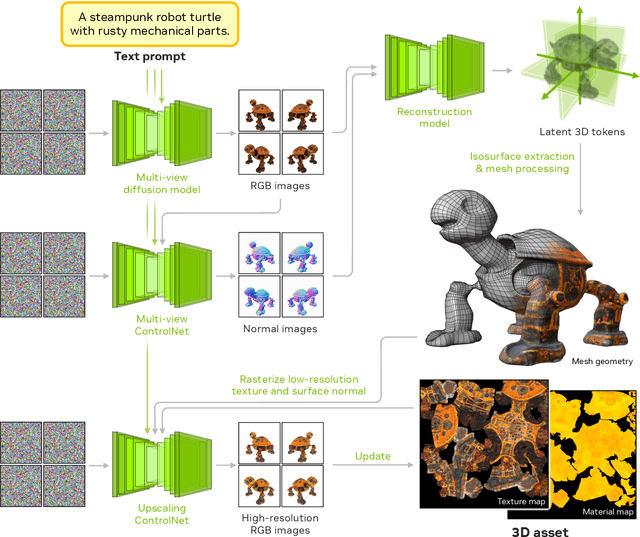
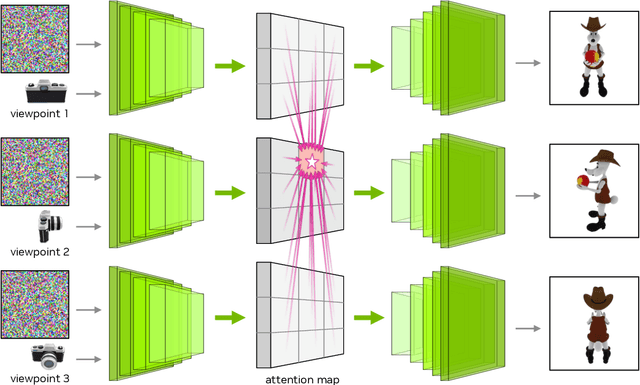
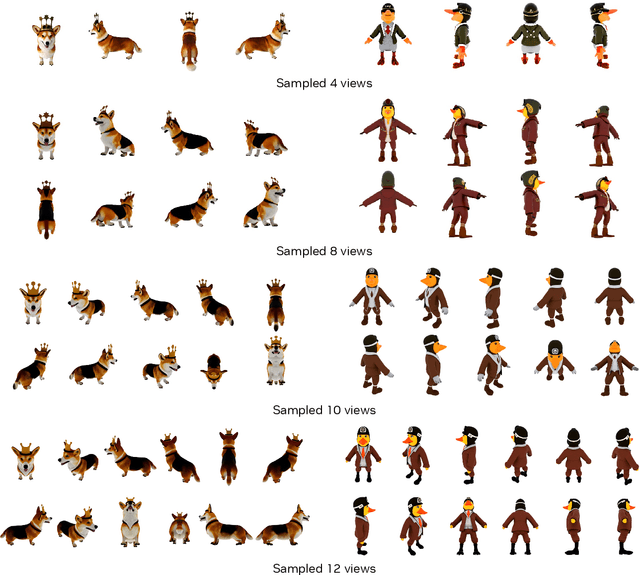
Abstract:We introduce Edify 3D, an advanced solution designed for high-quality 3D asset generation. Our method first synthesizes RGB and surface normal images of the described object at multiple viewpoints using a diffusion model. The multi-view observations are then used to reconstruct the shape, texture, and PBR materials of the object. Our method can generate high-quality 3D assets with detailed geometry, clean shape topologies, high-resolution textures, and materials within 2 minutes of runtime.
SimulTron: On-Device Simultaneous Speech to Speech Translation
Jun 04, 2024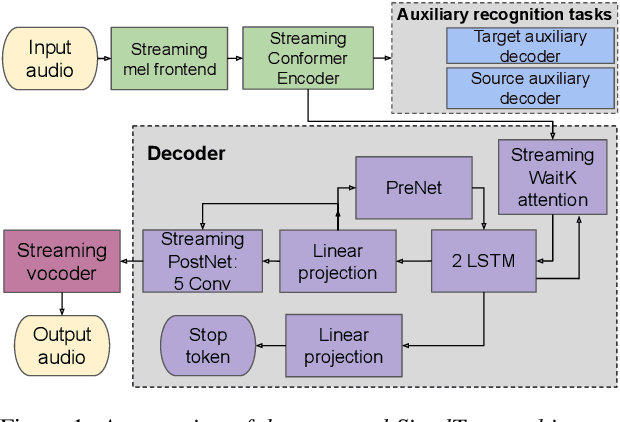
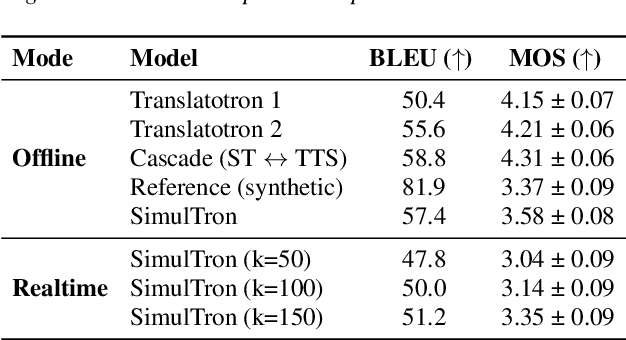

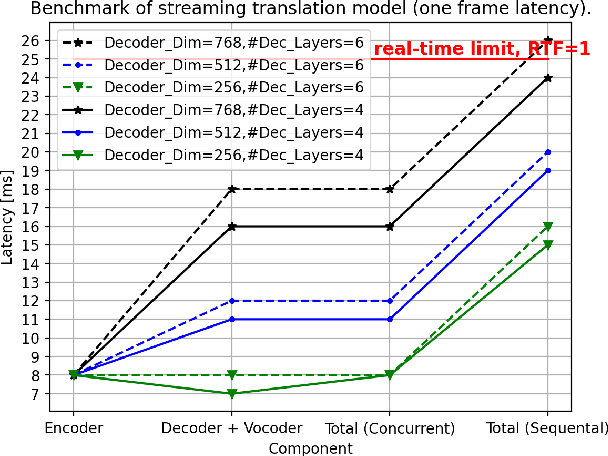
Abstract:Simultaneous speech-to-speech translation (S2ST) holds the promise of breaking down communication barriers and enabling fluid conversations across languages. However, achieving accurate, real-time translation through mobile devices remains a major challenge. We introduce SimulTron, a novel S2ST architecture designed to tackle this task. SimulTron is a lightweight direct S2ST model that uses the strengths of the Translatotron framework while incorporating key modifications for streaming operation, and an adjustable fixed delay. Our experiments show that SimulTron surpasses Translatotron 2 in offline evaluations. Furthermore, real-time evaluations reveal that SimulTron improves upon the performance achieved by Translatotron 1. Additionally, SimulTron achieves superior BLEU scores and latency compared to previous real-time S2ST method on the MuST-C dataset. Significantly, we have successfully deployed SimulTron on a Pixel 7 Pro device, show its potential for simultaneous S2ST on-device.
 Add to Chrome
Add to Chrome Add to Firefox
Add to Firefox Add to Edge
Add to Edge